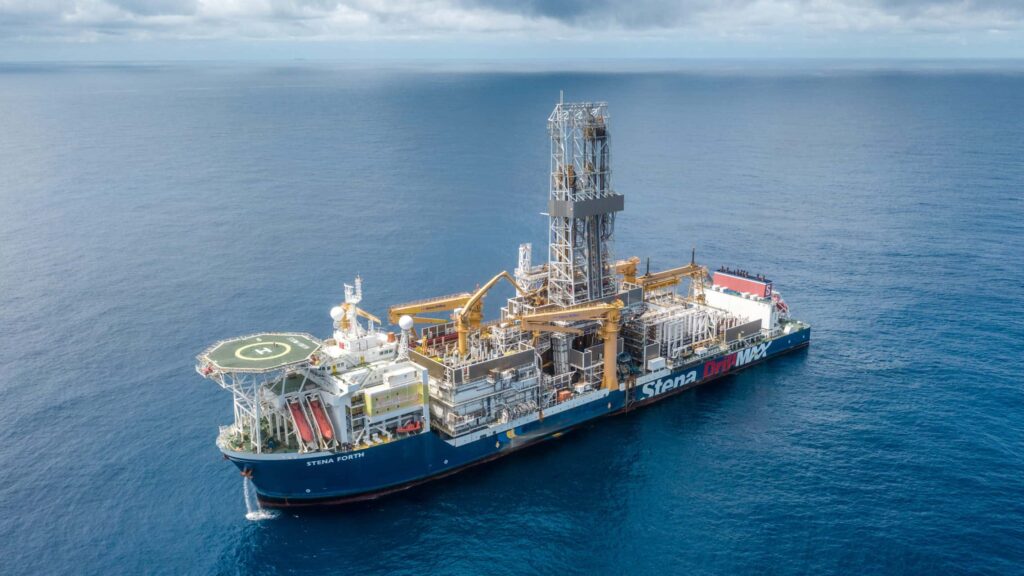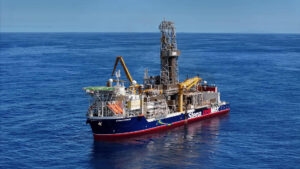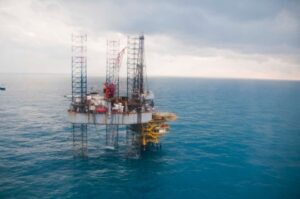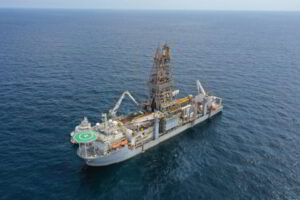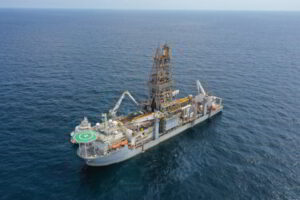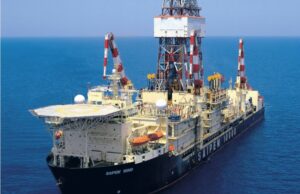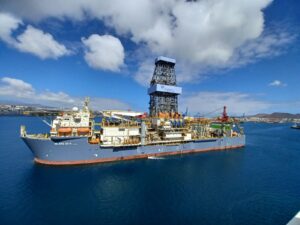Stena Drilling drillship comes to spud Chevron’s prospect in West Mediterranean as Egypt anticipates oil & gas growth with further exploration
Aberdeen-based offshore drilling contractor Stena Drilling has brought one of its drillships back to Egyptian waters to embark on a drilling assignment with Chevron, a U.S.-headquartered oil major, in the mostly unexplored West Mediterranean (West Med) blocks off the coast of Egypt. The country has lined up several new hydrocarbon exploration activities with other oil majors and oil and gas players.
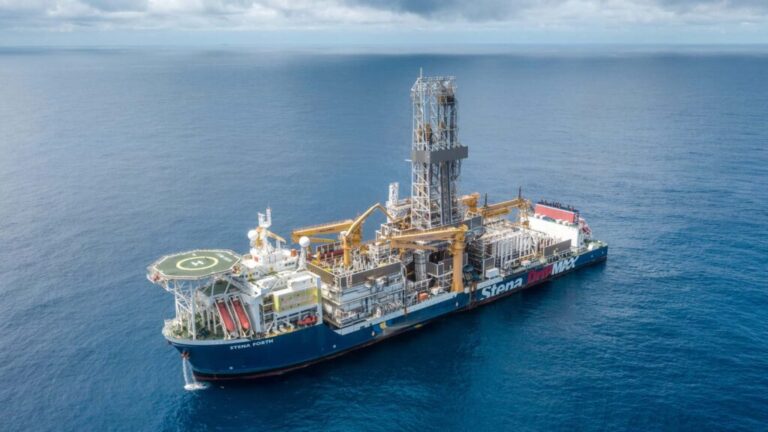
Chevron hired the Stena Forth drillship to drill the Khendjer-1 well on its North El Dabaa block as its first oil and gas exploration play in the Egyptian West Mediterranean offshore blocks. The drilling activities are slated to kick off in late November 2024.
After wrapping up its drilling campaign with Shell in Egypt, during which Stena Drilling’s rig made the Mina West discovery, estimated at 0.5 tcf, went to the Astican shipyard in Las Palmas to get its SPS out of the way before heading to the Anchois gas field.
The rig owner’s 2009-built Stena Forth sixth-generation harsh environment dual-activity dynamically positioned (DP3) drillship was slated to embark on its new drilling assignment in the third quarter of 2024, after completing a special periodic survey (SPS) at Astilleros Canarios (Astican) in the port of Las Palmas de Gran Canaria, Spain.
Stena Drilling was hired on a one-well firm assignment at the Anchois gas field with the flexibility to drill an additional option well in Morocco. Energean (45% stake, operator), alongside its partners Chariot (30%) and ONHYM (25%), started drilling the Anchois-3 appraisal well using the Stena Forth drillship in August 2024.
Once the assignment in Morocco was over, the rig started getting ready for its trip to Eqypt with all preparatory works for its arrival offshore Abu Qir completed last week. The loading of the spud equipment and bulks onto the rig was expected to take five to six days before the drillship was ready to head off to the well site for drilling activities at a wildcat well.
Related Article
Based on the rig movement tracking data, the Stena Forth drillship has arrived at the North El Dabaa block in Egypt’s West Mediterranean region, where it will spud the Khendjer-1 as the first wildcat well on the block. This drillship, capable of drilling in water depths up to 10,000 ft, features several Stena Drilling upgrades, encompassing a split dual fluid system, a well center transfer system for development drilling, and enhanced bed space, with a managed pressure drilling (MPD) system also installed.
This will not be the rig’s first assignment with Chevron in Egypt as it has worked for the U.S. oil major in this country before. At the start of 2023, it was confirmed that the drillship made a new gas discovery in the Nargis Offshore Area concession off Egypt for the U.S. oil major and its partner, Eni.
The 2009-built Stena Forth drillship can accommodate 220 people and its maximum drilling depth is 35,000 ft. Stena Drilling’s fleet status data shows the rig is committed until the end of February 2025 but is available for hire from March 2025 onward.
More drilling on Egypt’s energy horizon
At the end of October 2024, Karim Badawi, Egypt’s Minister of Petroleum and Mineral Resources, highlighted the core pillars in the country’s state of energy play, explaining that from July to September, the influx of added production reached about 30,000 barrels of oil per day and 133 million cubic feet gas per day. While 77 exploratory wells were drilled during the period, only 54 resulted in discoveries, 40 of which were oil and 14 gas discoveries. This added reserves of about 71 million barrels of oil and 680 billion cubic feet of gas. The minister interpreted this as a positive sign, pushing the production wheel to start spinning again after the output decreased.
According to Badawi, the objectives of the Ministry of Petroleum and Mineral Resources in the current period are made up of six elements, including covering the citizens’ requirements for petroleum products by focusing on upstream activities, optimizing the petroleum resources monetization, through refineries and petrochemical complexes to create value, and making a breakthrough in the mining sector to optimize it.
In addition, these objectives entail working as one team with the Ministry of Electricity and Renewable Energy to provide an energy mix that increases the Egyptian economy growth and leverages its location to produce hydrogen and energy trade, setting an attractive investment environment along with maintaining safety, energy efficiency and reducing emissions, and enhancing regional cooperation to attract investments to the country and the region as well.
The minister also acknowledged the challenges the oil and gas sector encountered over the previous period due to decreasing production and exploration due to the increase of the foreign partners’ arrears for many reasons, such as the pricing gap between the cost and the selling price, the hike in energy consumption rates, coupled with the increase in world energy prices and high exchange rate.
To tackle such issue, Badawi asserted the significance of continuing close work with foreign partners, noting that the number of companies operating in the exploration and production field reached 57, eight of which are among the largest International players, six are specialized local Egyptian companies, and more than 12 international specialized companies in the petroleum and technology services domain.
In a bid to achieve the ministry’s objectives, more than 20 Egyptian investors were invited at the end of September 2024 to invest directly in field developments to optimize production. After many expressed interest in such opportunities, the necessary steps are being taken, as confirmed by the five inked memoranda of understanding (MoU) with major national companies.
Related Article
The minister added that the main activities of the companies operating in production development entail further drilling activities. One of them is Chevron’s European rival, Eni, which will resume its drilling activities at the super giant Zohr gas field offshore Egypt, almost two hundred kilometers north of Port Said in the Shorouk area, once its contracted rig arrives at the field in December 2024 to drill two wells to continue the production plan, where it stopped, and add new hydrocarbons to reach 220 million cubic feet gas per day.
The Ministry of Petroleum and Mineral Resources previously denied reports that surfaced a few months ago about Eni withdrawing Saipem’s Santorini seventh-generation drillship from Zohr, explaining that the rig, which worked in the Mediterranean, completed its work and sailed out of the area. However, a different drillship is expected to undertake the Zohr drilling program.
Another European oil major, BP, is pursuing further hydrocarbon exploration in Egypt. According to Badawi, a plan was set to accelerate putting the second phase of the Raven project into production mode in January 2025, by adding more investments and starting to drill the King field at the beginning of next year.
Apache Corporation is present in the country as well and four exploratory areas in the Western Desert were assigned to the company to be put on the production map. The firm agreed upon the incentives and pricing of the produced gas to gradually boost production to reach 80 million cubic feet of gas per day by the end of 2025.
Meanwhile, the Minister of Petroleum and Mineral Resources also highlighted Shell‘s milestone in kicking off production from its well at the start of October 2024, with production rates of about 30-40 million cf/d. Two other wells are expected to be brought online by the end of this year, within the next phase of the West Delta Deep Marine (WDDM) project, with a total of 160 million cf/d and investments of $227 million.
Regarding the upcoming hydrocarbon exploration activities, Badawi spotlighted Chevron and ExxonMobil‘s activities to embark on the drilling of exploratory wells in the western Mediterranean for the first time in line with completing the regional seismic survey on September 28, 2024, for an area of about 2,185 km2 in the western Mediterranean, as well as preparing the third phase of the regional seismic survey of the Gulf of Suez and Red Sea regions.
Egypt assigned 17 new exploration blocks as part of Egyptian General Petroleum Corporation (EGPC) bid round, encompassing eight brownfields in the Gulf of Suez and the Eastern Desert, four exploration blocks in the Western Desert, and five exploration areas across the Gulf of Suez and the Western Desert. Badawi feels encouraged by the agreements and investment opportunities secured in 2024 such as the seven agreements signed with a signature bonus of $13.5 million, a minimum investment of $367.5 million, and a commitment to drill at least 32 wells.
The objectives for next year entail accelerating the pace of development and production activities to help compensate for natural decline, production increase, and reduction of the import bill, in addition to enhancing exploration activities to add new reserves, maximizing the utilization of energies in refineries, continuing the activities of delivering gas to households and converting vehicles to work with natural gas, and launching a digital portal for mineral resources with areas for mining to attract investments.
Intending to bolster the country’s economic growth, the minister outlined plans to sign 15 new agreements by the end of this year and next year 2025, with a signature bonus of up to $20 million, a minimum investment of $748.5 million, and a commitment to drill at least 46 wells.

